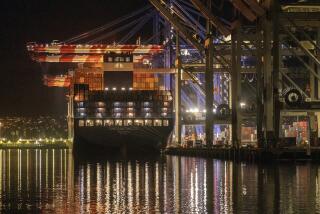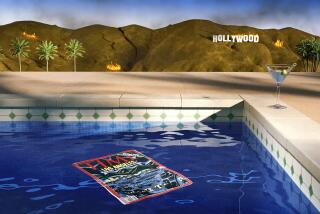A look at noteworthy addresses in...
- Share via
A look at noteworthy addresses in the Southland. Stephen Saunders, a scientist with the Jet Propulsion Laboratory, spoke Tuesday on “The Magellan Project” at Claremont McKenna College. From his remarks:
On the Venusian Environment “Venus is one of a class of planets that we call terrestrial planets, the rocky planets in our solar system. Venus and Earth have roughly the same density and size and remarkably similar compositions. (But) Venus did not have large amounts of water, as the Earth did. . . . The carbon dioxide that stayed in the atmosphere leads to that rather extreme greenhouse that we see on Venus where the surface temperature is about . . . 900 degrees Fahrenheit. That’s hot enough to melt lead or zinc or tin.
Venus is a planet that is dominated by volcanism. Some 85% of the planet surface is covered by one form of volcanic material or another. . . . (Among) the most interesting volcanic phenomena are channels. The longest one is nearly 7,000 kilometers long. That’s longer than the Nile River. . . . I feel we don’t really understand how these can form. They’re almost certainly volcanic, but the problem is that even under the very high surface temperature on Venus there aren’t any known volcanic lavas that could flow that far without freezing. There are some materials that one could imagine, like a vast quantity of sulfur or some strange carbonate or some other kind of magmas that might form this, but certainly normal lavas wouldn’t form these long channels.”
On the Magellan Mission “What we wanted to do is to provide a global map (of Venus). We wanted to understand more about impact processes--the impact of asteroids and comets on the surface. We wanted to understand the surface composition. Using geophysical models, especially the gravity field, we wanted to understand the interior density distribution. We’ve (now) seen something like 99% of the planet. We learned a few global things . . . we pinned down the north pole more accurately, the mean radius of the planet much more accurately. The Magellan radar . . . had a resolution of about 100 to 300 meters.”
Looking Ahead WEDNESDAY: Antonia Hernandez, president and general counsel of MALDEF, on “The Challenge of Living in a Multicultural Society,” 6:45 p.m., Marian Miner Cook Athenaeum, Claremont McKenna College. Call (714) 621-8244.
FRIDAY: Ambassador Zhang Wenpu, vice president, Chinese People’s Institute of Foreign Affairs, on “Sino-American Relations: A Chinese Perspective After the 14th Party Congress,” noon, Sheraton Grande Hotel. Sponsored by the Los Angeles World Affairs Council. Call (213) 628-2333.
Announcements concerning prominent speakers in Los Angeles should be sent to Speaking Up, c/o Times researcher Nona Yates, Los Angeles Times, Times Mirror Square, Los Angeles, Ca. 90053






